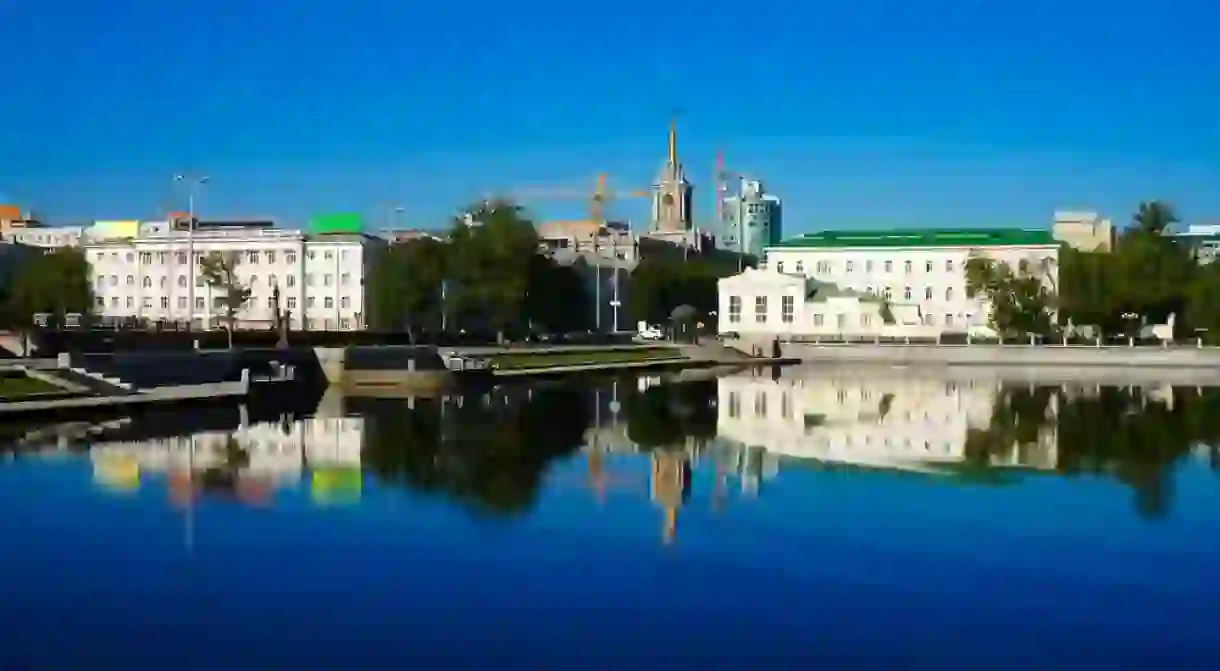11 Interesting Yekaterinburg Facts You Need to Know

Yekaterinburg is a city with a lively art and music scene comparable to Russia’s bigger metropolises. It was an essential industrial hub during WWII and has a gritty history. Here are some fascinating facts about Russia’s industrial heartland.
The Russian Empire ended in Yekaterinburg
In 1918, Tsar Nicholas Romanov and his wife Alexandra and their children Olga, Tatiana, Maria, Anastasia, and Alexei were executed by the Bolsheviks. The site of the execution, Ipatiev House, is now the ‘Church on the Blood’, which was built in honour of the Romanovs’ sainthood. With the family’s death, the Russian Empire and Royal lineage ended, and the Russian nation was propelled into the new communist state. There is a persistent conspiracy theory that claims Anastasia survived the ordeal.

Mafia gang wars were rife in the 1990s
The infamous Uralmash gang was founded by local mafiosos in search of financial gain. They initially began controlling small business in their local neighbourhood, but quickly rose to power as the dissolution of the USSR led to widespread instability. Soon, Yekaterinburg was gripped by violent turf wars. The Uralmash gang’s arch enemies were the Central Gang. Each gang buried their deceased in separate cemeteries at different sides of the city. You can now visit the resting places of once-infamous mafia members, whose gravestones are engraved with hyper-realistic images and emblazoned with their defining qualities. One was ‘an expert in knife-throwing’ while another ‘possessed deadly fist-fighting skills.’ Today, some shopping malls, hotels and juice bars are still owned by former gang members.

Metal produced in Yekaterinburg was used to make the Eiffel Tower, the Houses of Parliament, and the Statue of Liberty
Historically, metallurgy was one of the Yekaterinburg’s biggest industries. It was the first city in Russia to be industrialised and its importance grew further when the Trans-Siberian Railroad connected it with Siberia. In 1820, roofing iron made in Yekaterinburg was used to cover the roof of the Houses of Parliament in England. Ural steel was used to construct the Eiffel Tower in Paris. And the region’s copper was used to make the Statue of Liberty in New York.
The city has street art for visually impaired people
Braille-Art is an initiative between STENOGRAFFIA and Moscow-based creative agency Possible, that aims to create an opportunity for blind people to engage with the city and the wider community. Braille-Art – located at 36 8th March Ulitsa, Yekaterinburg – tells the stories of three visually impaired people who went on to excel in their respective industries.

Yekaterinburg was a crucial location during WWII
During WWII, Yekaterinburg became an important industrial hub because of its easterly locale and metal producing factories. Much of the industry in Moscow and St. Peterburg was transferred so the war would not interrupt it. The city also protected a substantial portion of the State Hermitage’s collection of valuable art when it was transferred to Yekaterinburg for safekeeping.
Yekaterinburg is dubbed the constructivist capital of Russia
With plenty of iconic constructivist structures around town, it’s easy to see how the city got its nickname. Along the city’s main drag, there are several constructivist buildings, including the iconic Iset Hotel, as part of the Chekist Town complex (a former residential compound for the NKVD, the KGB’s predecessors). This complex, incidentally, is the namesake of one of the many indie rock bands that keep the city kicking on into the early hours.

Shigir Idol, the world’s oldest wooden structure, was found in Yekaterinburg
The world’s oldest known wooden sculpture was found in a peat bog in the Middle Urals. The wood is around 11,500 years old, making it twice as old as the Great Pyramid of Giza, three times older than Babylon and five times more ancient than the ruins of the ancient city of Petra. The wooden sculpture resembles a totem pole and can be found in the Sverdlovsk Regional Museum of Local Lore.
Yekaterinburg is Boris Yeltsin’s hometown
The Russian federation’s first president hailed from the Ural’s first city. He actually grew up on a nearby collective farm and moved to the city for tertiary study. He joined the local communist party and rose up in rank locally before being transferred to Moscow, where he became a senior communist official and eventually the first leader of the free state.

It is the first main stop on the Trans-Siberian Express and is dubbed the ‘window to Asia’
Heading east to Vladivostok, Yekaterinburg is the first major stop on the legendary train route. From Moscow, it takes just under a week to reach Vladivostok. As a result, many travellers decide to break up this epic train trip with a few days in Yekaterinburg.
Old Man Bukashkin calls Yekaterinburg home
Iconic bohemian artist from the Soviet era, Old Man Bukashkin left a legacy of street art in the city. Known around town for his eccentricity, he invigorated dead space downtown and often roamed around carrying a balalaika and tambourine, wearing bells on his hat. He became a much-loved cult personality whose influence extended beyond Yekaterinburg city limits.

The Ural mountains are really old
Pegged at somewhere between 250-300 million years old, the nearby Urals are really, really old. The traditional marker of the Europe-Asia border, the range runs through Russia, north to south. The Urals are also rich in many minerals and gemstones and an important source of industry for the city.













